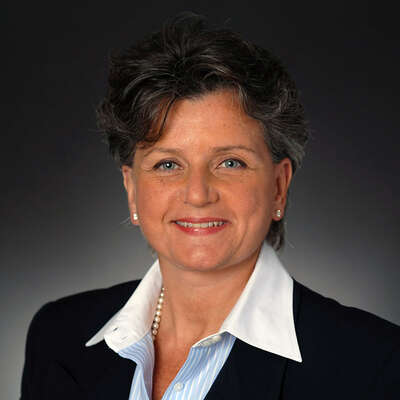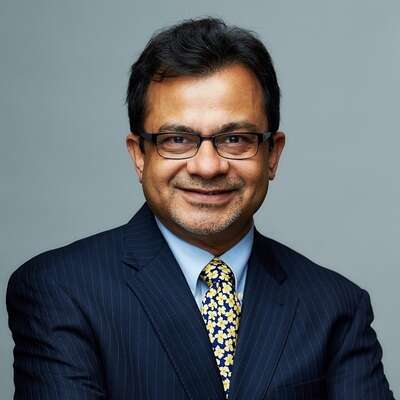Boyden’s Leadership Series presents discussions with business and thought leaders from organizations across the globe. The series focuses on topical issues that offer executives, political leaders and the media insight into current trends in business and talent management in the global marketplace.
This issue features Dr. Rebecca Ray, Executive Vice President of the Knowledge Organization, human capital practice lead, and director of The Engagement Institute at The Conference Board. In the interview, Ray discusses recent changes in the talent landscape, approaches to talent attraction and retention, the importance of employee engagement, and ways to identify and develop future leaders.
At The Conference Board, Ray is responsible for overall quality and the continuing integration of research and engagement efforts. She oversees Ask TCB, the company’s business information service, and leads the global human capital practice. Ray also hosts the monthly Human Capital Watch webcast, oversees the Human Capital Exchange website, and created the Senior Fellows program in human capital with some of the profession’s most acclaimed leaders.
Prior to The Conference Board, Ray served as a senior executive at several leading companies, where she was responsible for issues surrounding talent acquisition, organizational development, leadership development, employee engagement, performance management, executive assessment and succession planning. She previously taught at Oxford and New York Universities and led a consulting practice, offering leadership assessment and development to Fortune 500 companies and top-tier professional services firms. Ray was named “Chief Learning Officer of the Year” by Chief Learning Officer magazine and one of the “Top 100 People in Leadership Development” by Warren Bennis’s Leadership Excellence magazine.
Ray is the co-author of numerous publications focused on leadership development and engagement, and a frequent speaker at professional and company-sponsored conferences and business briefings around the world. She received her Ph.D. from New York University.
Boyden: Where did you begin your career and how has it evolved over the years?
Ray: I began my career as a high school teacher and very much enjoyed interacting with young people and watching them gain confidence growing into the first phases of adulthood. I then started teaching part-time at a local college. I found that I preferred that level of conversation and realized that if I wanted to teach at the college level I needed to earn my doctorate, which I subsequently did. After teaching at the college level for some time, I fell into consulting, working alongside an agency in New York with a client who was planning a media and book tour. After meeting with the client for the first time, I learned that her media tour was beginning that night, so I quickly prepped her with mock questions and answers, then pushed her out into the spotlight. That marked the launch of my consulting practice.
I worked as a consultant for the next 10 years. In one instance, a client offered me the opportunity to come in-house, where I’ve since been working on leadership development, assessment, succession planning and talent management. The blue line in my life is my hope to be of service to people in their developmental journeys. I take great pride in thinking that for some organizations and some individuals I have made a difference.
Boyden: As the talent landscape has changed, how have corporate approaches to talent attraction and retention evolved?
Ray: There has been a great deal of attention surrounding talent attraction, development and retention over the past several years. But as jobs have become more specialized, more complex, and more reliant upon skills that are not as readily available in the marketplace, companies are increasingly struggling to identify perfect candidates. As a result, when they do find someone eligible for a specialized role, they are taking stronger approaches to attract, develop and retain that talent. After spending time and resources developing and training candidates for specialized roles, companies understandably want to avoid letting them leave before they have added value.
People are therefore beginning to understand how important talent development and retention are as the workplace becomes increasingly complex and specialized. Companies are starting to think about crafting the employee experience and understanding employee needs and desires in a way that is not dissimilar to the emphasis placed on customer experience a few years ago.
Boyden: How are companies working to optimize the employee experience?
Ray: As just one example, consider the implications of social media. We live in a world where social media makes every corporate infraction readily known and easily accessible, and while we can bemoan this as right or wrong, this is the world we live in. As a result, companies are very sensitive to their employee experiences and the types of ambassadors their employees are on social media and in their own social networks, wondering how they can make this situation as positive as possible.
Perhaps above all else, employees want decent managers. Organizations must learn to groom managers to be caring and other-centered, so that employees are not driven out by poor leaders. This involves holding people accountable for the engagement levels on their teams, for attrition and turnover, and for productivity gains. Research shows a compelling link between engagement and productivity, so managers must be tasked with ensuring employee engagement and satisfaction.
Boyden: In the current talent landscape, how can companies effectively identify and develop future leaders?
Ray: Like generations before them, our research shows that millennial leaders want to learn and grow. What sets millennials apart from past generations is their willingness to leave a company that they don’t feel is fueling this desire to learn to pursue those ambitions elsewhere. When companies do provide this development, millennials are likely to stay.
Companies therefore must take a chance on millennial leaders, identify high-potential candidates, and provide them with experiences and responsibilities early on. Not only will this encourage millennials to remain at the company, as they will feel challenged and encouraged, but engaging millennials will allow companies to retain employees as baby boomers leave the workplace.
Boyden: How do you expect talent management to evolve even further?
Ray: The ability to improve the experience for employees overall will only increase, as will opportunities for development, particularly geared toward millennial leaders. I also expect more of a focus on managerial talent and transitioning those who are moving into leadership roles. It will be important that these new leaders learn from managers who are about to exit, so the lessons and underpinnings of the past are not lost. While new managers will face challenges that exiting managers never even dreamt of, there are some skills and experiences that are immutable, like engaging people, bringing people along for the journey, and aligning around a shared vision. Those things don’t ever change.
Boyden: What impact has the rise of digitization had on the talent landscape and talent retention?
Ray: In our recent C-Suite Challenge – our annual research study that surveys C-suite executives across the globe – we found that those who are leading digital transformations rank tech-savviness relatively low on the list of most important skills. Instead, the skills considered most important include collaboration and the ability to engage and inspire others. Ultimately, whether the change consists of digital transformation or the transition from a horse and carriage to an automated factory, if you have the technical skills but not the ability to help people understand the journey, it is impossible to carry them with you through the change.
Interestingly, companies are at different stages of digital transformation, with some farther ahead than others. Some workplaces already have a very robust mix of workers, work types and workplaces, and some are farther back, using a more traditional full-time employee model.
Moreover, given recent changes in the composition of workers, many CEOs in our C-Suite Challenge voiced concerns over being able to find contingent workers, and over the associated regulatory demands. However, the most pressing concern was the ability to effectively engage contingent workers and bring them into the workplace culture. In many ways, our laws dictate that contingent workers be regarded as a separate type of worker; however, when organizations treat contingent workers as such, they feel less welcome as part of the team.
What does this mean for engagement levels in the workplace? How should two employees who sit next to each other but receive different benefits be managed? How do you ensure the corporate culture remains intact? These are the difficult questions facing executives.
Boyden: How have diversity and inclusion efforts changed amidst recent trends?
Ray: Millennials are larger in number than baby boomers at their height. They’re also certainly a larger group than Generation X at their peak, and they represent the most diverse generation to come into the workplace. Millennials regard diversity as a table stakes expectation, and are more confident about overcoming barriers for women and minorities in the higher ranks of leadership, which is encouraging.
As diversity has become more generally accepted as a workplace principle, the conversation has shifted toward inclusion and the role of intersectionality. With many employees not fitting neatly into discreet boxes, the concept of inclusion is broadening to better recognize this level of intersectionality.
Boyden: What was the most profound takeaway from The Conference Board’s 2018 C-Suite Challenge survey?
Ray: The research shows that the C-suite is most concerned with attracting and retaining talent. However, culture plays a significant role in talent management. Whether you have a culture of innovation, a culture of communication, a culture of engagement, or a culture of inclusion, employees will not feel engaged unless the organizational culture includes them and their aspirations. Since engagement and culture go hand in hand, I have recently seen an increase in the number of people hired to address organizational culture, which is an important step.
Boyden: How important is it for executives across industries and locations to be able to connect and share ideas and strategies?
Ray: The sweet spot of what we do here at The Conference Board is our ability to connect executives from different industries and different parts of the world through our peer networks. There is nothing like sitting in a room with peers who are struggling with the same challenges and hearing their approaches and solutions. You may not adopt their approaches entirely, but it allows you to consider how the approach might lend itself to your organization, which is very powerful.
Boyden: Looking back at your career, what is the greatest lesson you’ve learned?
Ray: I have had the opportunity to do some terrific things in my life, and I have had some wonderful people drop things in my lap over the years, telling me I might be a good fit. I am very grateful for these individuals and experiences. I’ve always sought out different opportunities, taking positions where I would be part of a European headquartered company, building a corporate university from the ground up, and joining a company about to go public.
When taking positions of this sort, it can be difficult to anticipate the experience but I have truly enjoyed the ride. I had no idea what I’d be when I grew up, but I feel very fortunate and if I can continue figuring out ways to give back a little bit then I count myself lucky.
The views and opinions expressed here do not necessarily represent the views of Boyden, only those of Dr. Ray.




